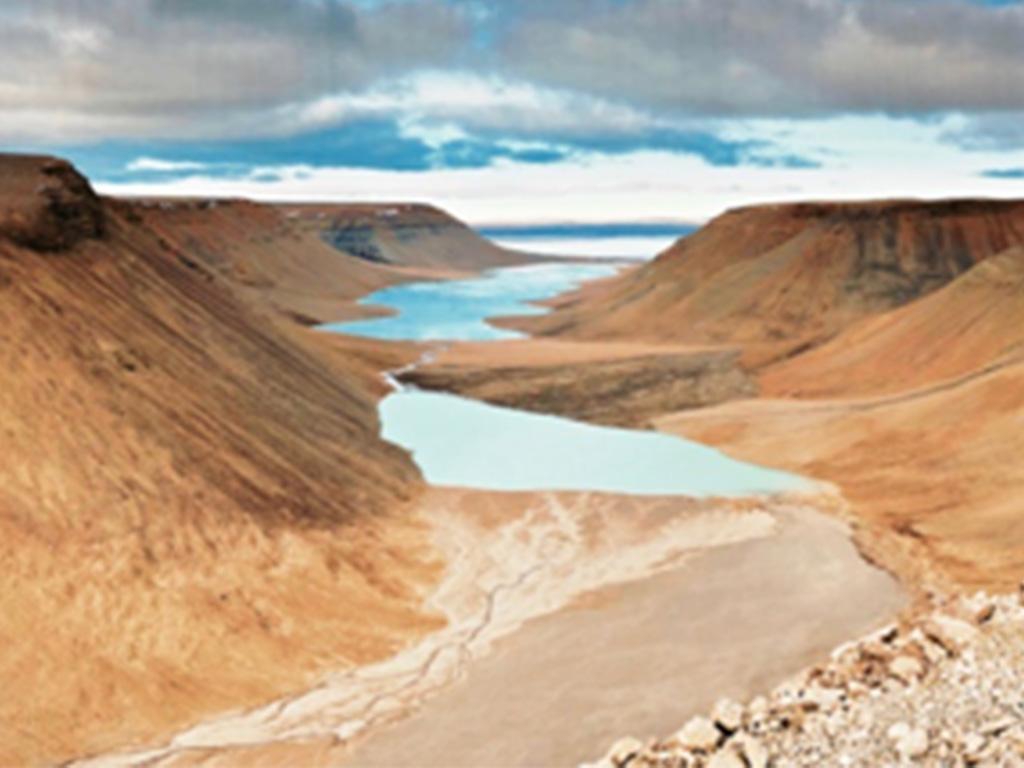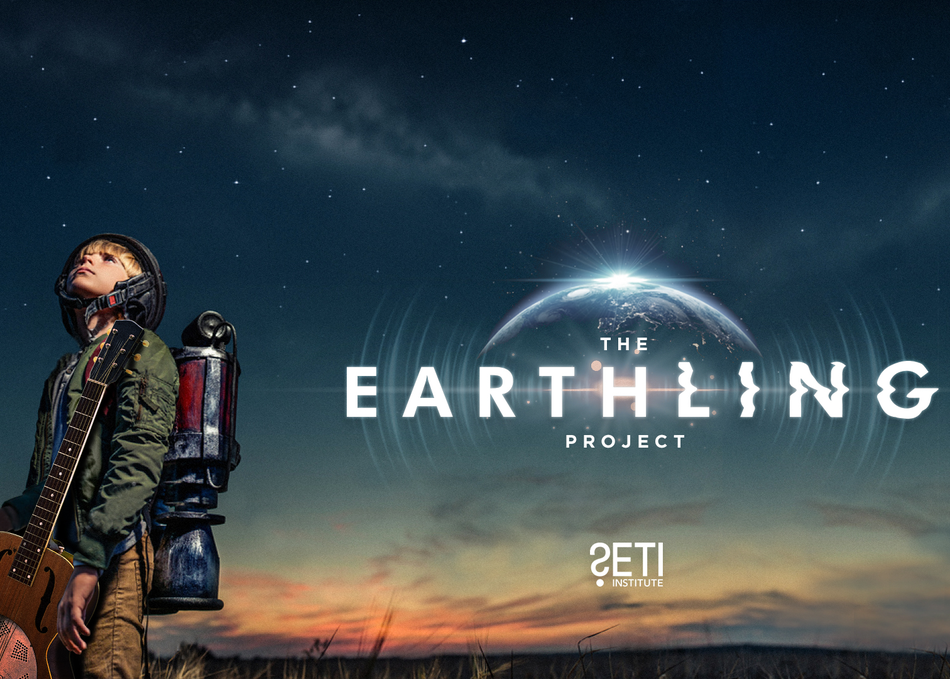
Devon Island, a remote region of the Canadian High Arctic, has an undeniable otherworldly ambiance… but the extreme environment, while making it an excellent testing ground as a Mars analog, discourages casual tourism. Now Google Street View gives virtual explorers the chance to walk around the rugged terrain of one of the most Mars-like environments on Earth. The partnership between Google and the NASA Haughton-Mars Project (HMP), announced in a joint statement by the SETI Institute and the Mars Institute, aims share the marvels of scientific fieldwork involved in Mars exploration efforts with the public.
A guided virtual tour brings viewers to notable features such as Astronaut Canyon, and Haughton Crater, an impact crater believed to have been formed by a meteor strike some 23 million years ago. Viewers can also watch a short documentary featuring SETI Institute Senior Planetary Scientist Pascal Lee. Space.com picked up the story:
"The main objective for Google at HMP-2018 was to collect Street View imagery to allow Google Earth and Google Maps users to visit Devon Island virtually, and to create a Google Earth guided tour illustrating, via factual narrative, how Devon Island is so similar to Mars," officials with the SETI Institute said in a statement.
"We are excited about this new partnership with Google on the Haughton-Mars Project and about the data products being released," Pascal Lee, director of the NASA HMP at NASA Ames Research Center, said in the statement. "They allow us to share with the world some of the Mars-like wonders of the site and the fieldwork that we do."
Lee was also in the news earlier this month for his work leading the field team that announced successful 3D mapping of ice-filled lave tubes in the Myvatn region of Iceland using Astrobiotic Technology, Inc.’s LiDAR-equipped drone. The team hopes the observations will help “understand better both the potential hazards and opportunities presented by the many lava caves we hope to explore on the Moon and Mars”, Lee said in a SETI Institute press release.
- SETI.org: Google and NASA Haughton-Mars Project Partner on Moon/Mars Exploration Prep
- Space.com: Google Street View Takes the Armchair Explorer to Mars (Actually, the Canadian Arctic)
- Inverse: The Island That Mimics Mars Now on Google Street View
- CNet: Explore 'Mars on Earth' in Google Street View
- Google: Rove around "Mars on Earth” in Street View
- Leonard David: Google/NASA Partnership Offers Mars-on-Earth Wonders
- Android News: Google Street View now lets you roam around “Mars on Earth”
- Daily Heralds: Google Street View Adds Devon Island (Known As 'Mars on Earth')
- Mars Institute: Google and NASA Haughton-Mars Project Partner on Moon/Mars Exploration Prep
- Google Earth: Devon Island
 Saturn’s Moons and Rings Shape and Sculpt Each Other
Saturn’s Moons and Rings Shape and Sculpt Each OtherThe elegant rings of Saturn may be the planet’s most acclaimed feature, but observations from the last stages of the Cassini mission, which ended in 2017, draw attention to its five peculiar ring moons. A study recently published in the journal Science suggests that the oddly shaped moons, which resemble raviolis or flying saucers, were likely sculpted in a twirling dance with Saturn’s rings. But the small, icy moons aren’t uniform; Atlas is smooth and wide, while Pan bears a sharp ridge along its equator. SETI Institute Senior Research Scientist Matt Tiscareno participated in the Cassini mission and offered insight to The New York Times on the findings:
“Neither of these moons is actually orbiting in a cloud of ring material right now, so it wasn’t necessarily obvious that the equatorial ridges come from accreted ring material,” said Matthew Tiscareno of the SETI Institute, who was not involved in the study and says more work is needed to explain the differences between the two moons.
Researchers also found that the moons are coated in colorful red material from the rings, as well as white material erupting from Enceladus, Saturn’s ocean moon orbiting just beyond the rings, which Tiscareno describes as “the cosmic graffiti artist of the Solar System”. What’s more, the dance of moons and rings continues, as Tiscareno told PBS’s Nova:
“This is a robust, evolving system,” says Matthew Tiscareno, a planetary scientist and Saturn ring expert at the SETI Institute who participated in the Cassini mission, but was not involved in the study. “These moons...might have grown up together with the rings.”
Far from being a static system, Saturn is an active and complex system, and each mission has uncovered fascinating new details.
- New York Times: Saturn’s Rings Are Sculpted by a Crew of Mini-Moons
- PBS: Saturn’s Innermost Moons Are Red Ravioli, Thanks to Its Rings
- Science: Close Cassini flybys of Saturn’s ring moons Pan, Daphnis, Atlas, Pandora, and Epimetheus
 Cosmic Connections in Project EARTHLING
Cosmic Connections in Project EARTHLINGSXSW featured a panel discussion on the Earthling project, an ambitious project by SETI Institute artist-in-residence Felipe Pérez Santiago. But Why Tho? covered the story, quoting Santiago in a press release from when he joined the SETI AIR program.
“The project’s goal is to create global collaborative music, for eventual launch into space, that leaves a message of who we are now as species, as humans, and as earthlings,” said Felipe. “Using online platforms and social media we will invite musicians, artists, space lovers, humanists, and everyone else in the world to participate and build a community of music, art, and technology.”
The long-term project is in its early days and will involve multiple phases of collaborative work with artists and the public.
- But Why Tho?: SXSW 2019: Sending the Sound of Humanity to the Stars with 'The Earthling Project'
- Digital Trends: Astronomers plan to beam Earth’s greatest hits into deep space, and you can help
- WFMT: Earth’s Greatest Hits — producer Timothy Ferris recalls assembling humanity’s definitive playlist for the Voyager Golden Record
- Earthling Project: Join the Movement
Last week’s episode explored the impact of the microorganisms that call YOU home, in an encore of You Are Exposed. On our previous week’s episode, a look at the sometimes-contentious relationship between science, political engagement, and activism in an encore of Skeptic Check: Political Scientist.
Last time on Facebook Live, SETI Institute Director of Education Pamela Harman discusses augmented reality in education with AstroReality co-founder Joanne Dai and AstroReality science advisor and SETI Institute research scientist J.R. Skok. Videos of all past Facebook Live events can be found on our Facebook page: https://www.facebook.com/SETIInstitute/
- University of Tennessee: April 4, 2019, Knoxville, TN SETI Institute Senior Research Scientist Janice Bishop will give a talk: "Clues about the early Martian climate from the phyllosilicate record – How warm is warm?"
- More than Rocket Science – STEM Education and Foundational Barriers: April 4, 2019, Palo Alto, CA The SETI Institute’s Margaret Race will be the featured speaker
- Osher Lifelong Learning Institute, Astrobiology: April 1-29, Santa Clara, CA Instructors will include SETI Institute scientists Margaret, Race, Michael Busch, and Rosalba Bonaccorsi; former Director of Education at the SETI Institute, Edna DeVore, will also be teaching a segment
- Stockton Astronomical Society: April 11, 2019 Stockton City, CA SETI Institute scientist Meng Jin will give a presentation
- National Conference on Science Education: April 11-14, 2019 St. Louis, MO. The SETI Institute’s Airborne Astronomy Ambassador team will be participating including Pamela Harman, Dana Backman and Coral Clark
- Puerto de Ideas VI Festival de Ciencia: April 12-14, 2019, Antofagasta, Chile Nathalie Cabrol, Director of the Carl Sagan Center at the SETI Institute will be a featured speaker
- Rose City Astronomers – Another Pale Blue Dot; Inside the SETI Institute’s Search for Exoplanets: April 15, 2019, Portland, OR SETI Institute Senior Planetary Astronomer Franck Marchis is the featured speaker
- Golden Gate Bridging: April 27, 2019, San Francisco, CA SETI Institute Director of Education Pamela Harman will be previewing the new Cadette Space Science Researcher badge at Chrissy Field





